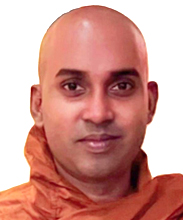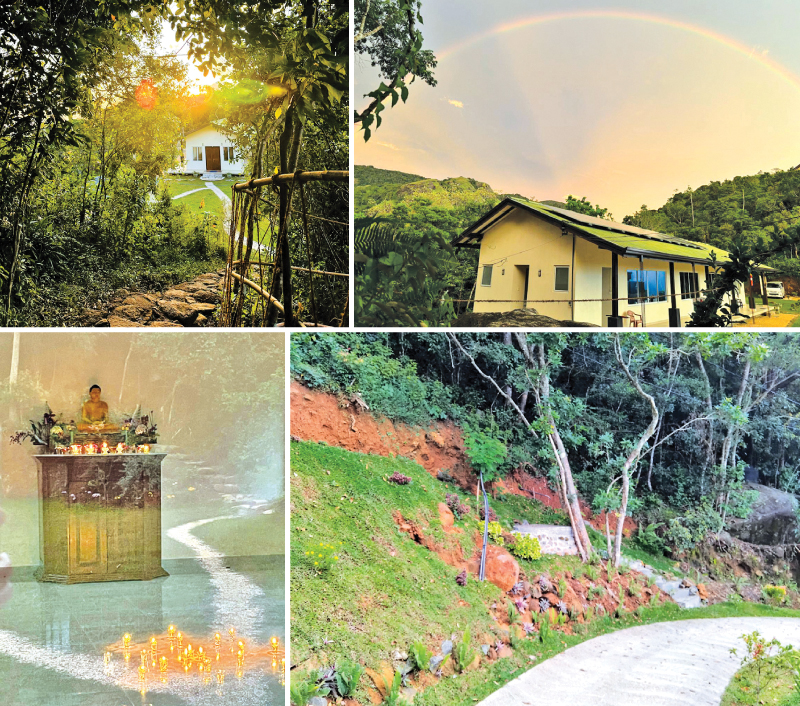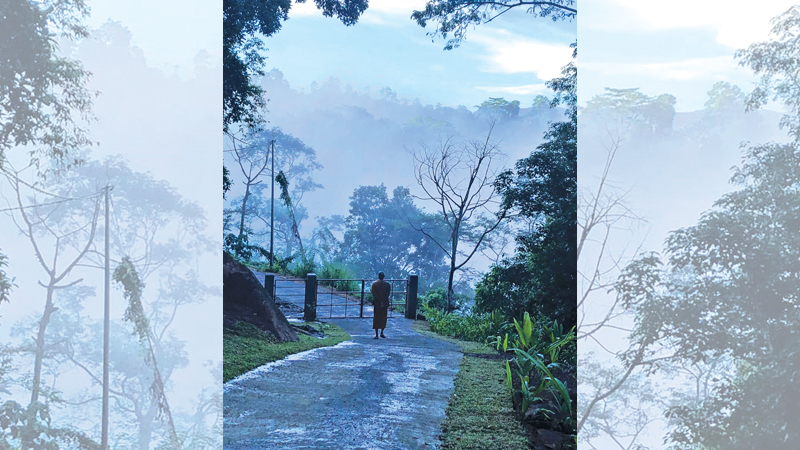 Ven. Seeladassana Thera was once an investment banker based in New York, he found his true calling in the Buddha Dhamma as a young adult and has never looked back. He is now the chief preceptor of the Sihananda International Meditation Community found in a rural locale in verdant Balangoda. The picturesque monastery surrounded by natural wonders provides a peaceful respite for practioners to investigate deep truths that lie hidden within our fathom long body and its mind. The Sunday Observer contacted Ven. Seeladassana Thera to inquire more about the nature of his practice, what inspired him to become a bhikkhu and questions about the Buddha Dhamma.
Ven. Seeladassana Thera was once an investment banker based in New York, he found his true calling in the Buddha Dhamma as a young adult and has never looked back. He is now the chief preceptor of the Sihananda International Meditation Community found in a rural locale in verdant Balangoda. The picturesque monastery surrounded by natural wonders provides a peaceful respite for practioners to investigate deep truths that lie hidden within our fathom long body and its mind. The Sunday Observer contacted Ven. Seeladassana Thera to inquire more about the nature of his practice, what inspired him to become a bhikkhu and questions about the Buddha Dhamma.
Q: How did Ven. bhikkhu begin his journey into ordination? What inspired you to take that step ?

Ven. Seeladassana Thera
A: Since my young days I was a truth seeker, but did not know what the truth really was. I thought science was the truth and mathematics was the truth so I really studied those subjects hard. After I grew older, I thought earning a lot of money and enjoying life was the truth, so I pursued that. By 2009 (at the age of about 30), I had gone through a lot of pleasant experiences like travelling the world and climbing the corporate ladder. I then realised that none of these would satisfy my search for the truth. It was then that I began to study the Dhamma and decided this could be the Truth I was looking for. It was a choice based on “saving the best for last” compared with being inspired. Or someone might say all my experiences up to that point, inspired me to leave the lay life and become a bhikkhu.
Q: Could you describe a turning point or deep insight into your own practice that transformed your understanding of the Buddha Dhamma ?
A: Understanding that Kamma gave birth to this life was a turning point. It made me realise that the Buddha’s teaching is extremely deep and human life is rare. From that point onwards I decided that I have to work hard on the Dhamma, practise all the time and not waste the opportunity that arose because of past causes. I say past causes because it helps us reaffirm that this whole Samsara is basically causes and effects.
Q: You have a monastery in Balangoda, where you conduct retreats. When did this start? and what qualities make Balangoda a conducive environment for Dhamma practice and meditation?
A: I have been teaching meditation in segments. Samādhi in 2014, and then Samādhi and Vipassanā since 2020. Our centre is near Balangoda and is hard to reach, so this gives us seclusion and separation from the community. It is in a forest and extremely quiet. These are important conditions for meditation practice. I have seen strong relationships with the outside world can prevent meditators from reaching the deeper levels of knowledge, so I always try to maintain a respectful separation between the bhikkhu and the layperson. This centre allows that.
Q: How has the solitude of forest life supported your inner development?
A: There are minimal objects that can enter the stream of the mind in the forest. At the beginning birds, beautiful trees or mountains can attract the mind. However, after some time these tend to stop being distractions. This allows the mind to fully focus on the meditation subject and continuously grow it. It is important to always drive meditation using wisdom. Even concentration meditation has wisdom which is wisdom about the development of concentration. The solitude of the forest allows these factors to develop. Silence has answers, if we use the mind to see them.
Q: What do these retreats offer, and can anyone join ?
A: I usually teach each person on a case by case basis. Some students can do breath meditation easily. Some can do Mettā. Some can do Kasinas. So I try to understand the best subject for a person and teach them that. If a layperson joins then they have to undertake a minimal of 5 Precepts. If a person does not have virtue, then they cannot advance in the meditation. I have had students lose concentration because of broken virtue. It is the same with bhikkhus. An Upasampadā bhikkhu has to follow all the Vinaya rules. If they do not, they cannot progress. The person’s mind will get stuck. This is a good test to see what prevents a meditator from advancing.
Q: What is the meditation technique you follow in the monastery ? Is it based on the Four Foundations of Mindfulness ? or tailored to suit individual needs ?
A: All meditation subjects taught by the Buddha leads with the Four Foundations of Mindfulness. This encompasses a level of concentration followed by insight. So anyone who wants to study deep insight will have to follow this. However the base object for starting insight meditation can be different. One yogi can start with ānāpānasati and develop this up to jhāna concentration then use that concentration to develop insight on vedanā (feeling). Then they are doing contemplation of feelings. Another can use the concentration to do insight on citta (consciousness), then it is the contemplation of citta. For these insight knowledges to mature yogis will have to discern all nama (mentality) and rupa (materiality) because the Buddha teaches us all has to be known. But for some yogis vedanā will be dominant, for others citta and so forth such defining their pathway according to the Four Foundations of Mindfulness.
If anyone requires more information about the Centre or retreats they may contact Ven. Seeladassana Thera at the following e-mail address [email protected].
To be continued…








